The Induction Site
Search this site, or just roll your cursor over the colored boxes below the pictures.Advertisement:
Advertisement:
Advertisement:
Advertisement:
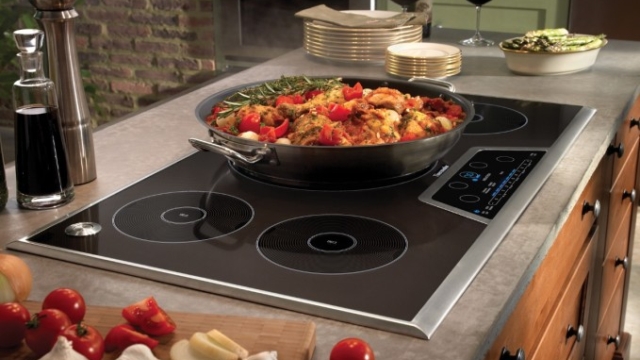
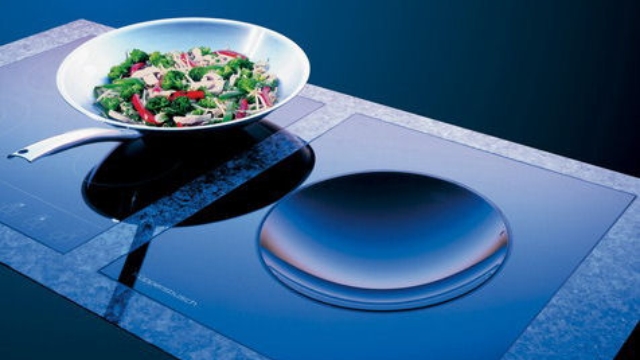
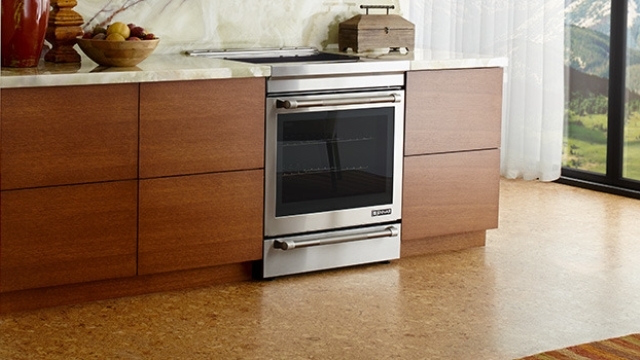
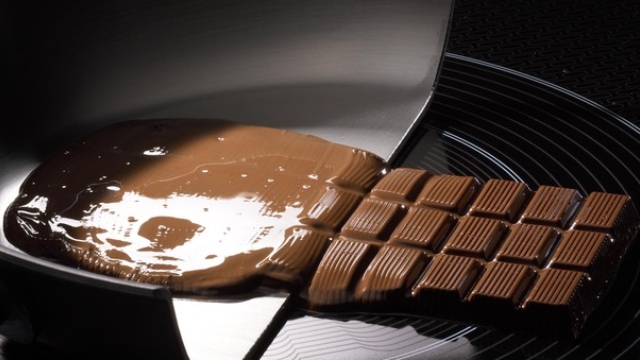
"She lived the latter years of her life in the horrible suspicion that electricity was dripping invisibly all over the house."
—James Thurber
Quick page jumps:
In short, because it can restrict your choice of induction-cooking units (or of any electrical cooking equipment).
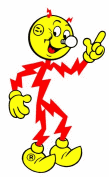
Presumably you are visiting this site because you are interested in induction cooking and are considering acquiring an induction-cooking unit. While we have tried to supply plenty of data on available units, there are a few practical matters concerning any unit that it behooves you to understand so you can make a choice that is practical for you. The folk who operate commercial kitchens don't urgently need to know these things because they pay other people to know them on their behalf, and to thus design their kitchens; but a homeowner does need to know this stuff, even if working with an architect or builder (unless you have more faith in them than most people's experiences indicate is prudent).
In pondering acquisition of an induction cooker, you will almost surely be in one of two situations: you are in the design phase of building a new house or of doing major renovations to at least the kitchen of an existing one; or you are replacing an electrical unit in an existing kitchen. The chief difference between the cases is the power wiring available in the walls, because in the first case you have control of that, whereas in the second, you have to deal with what there is, and that's that.
Induction equipment comes in two basic sorts: units intended to be built in as a permanent part of a kitchen and permanently wired in, and countertop units intended to be portable and to plug into an electrical socket of some sort. Each sort in turn can be designed either for residential use or for commercial use.
Standalone countertop units of a "commercial" design are usually intended for use either by caterers (who have to set up a complete kitchen on a brief, temporary basis) or in restaurant "front of the house" use, such as cooking of certain specialty dishes right at customers' tables; such commercial units presume the pre-existence of adequate power at a suitable socket quite close to where they are to be used. Countertop units designed for household use are intended for use with ordinary wall sockets, whether in a kitchen or elsewhere; that necessarily (as we will soon see) imposes fairly stringent limitations on their power level, and most such units are one-element lightweights—typically from 1.3 up to perhaps 1.8 kW, which limits correspond to a range from that of a typical average household gas-stove element up to surprisingly substantial firepower.
Permanent build-in cooking-unit installations, if electrically powered, require—like all major electrical appliances—what is called a "dedicated circuit"; that is an electrical supply line from your house's main electric distribution point (the fuse box or breaker box) direct to the appliance's location, and meant for use solely by that appliance. (And when we say "require", we mean not only functionally but—almost anywhere in the word—by law, as embodied in building codes.) It is the capacity of your home's dedicated circuit for its kitchen cooktop that determines how powerful a unit you can successfully install. If you try to install too powerful a unit, you will be unable to use it: the circuit breaker (or fuse) for it will keep tripping under high-use conditions.
Before we get to numbers, let's fix some concepts in our minds, so we understand what those numbers are expressing. Electricity is a flow of energy; we can make a decent analogy to a flow of water to help understand it. Water flows in a pipe under the influence of a pressure or force generated somewhere up the line; similarly, electricity flows in a wire under the influence of a force—aptly called the "electro-motive force" (abbreviated e.m.f.)—somehow generated somewhere up the line. For electricity, the generating of the e.m.f. is done by your power company, just as water pressure, at least in urban areas, is generated and supplied by your local water company or your town or city. The e.m.f. is much more commonly referred to as the voltage, because it is measured in units called Volts (named after Alessandro Volta). Now think about water flowing downhill, so that the motion of its mass can be harnessed to do some work, like turn a mill wheel or a power turbine: the greater the height it flows down, the more energy it carries, and the more work it can do. Likewise, the greater the voltage of an electrical supply, the more the energy the flow carries, and the more work it can do.
We might ask "measured compared to what?" With both water and electricity, we measure the actual gap or difference between two things to get the effective energy capability, but it is convenient to have a baseline. With water, we could use sea level, and measure a stream's energy potential by its height above sea level—even though we understand that it might end up being asked to give up its energy at a spot that is above or below sea level. With electricity, we conventionally measure against the biggest electrical "sink" we can find: the planet Earth. The voltage "level" of the planet is referred to in places that speak American English as "ground", and to make an electrical connection to that level as "grounding"; in places that speak British English, the corresponding terms are "earth" and "earthing". This is not conventional or metaphorical use: "ground/earth" for all electrical supplies—or at least those that are coming from a power company, not a battery—is real, true soil, and "house ground" is a literal, physical connection to some electrically conductive material placed fairly deep in the soil. For most homes, modern building codes allow use of the metal reinforcing bars ("rebar") in the house's foundation as an acceptable ground; but in more demanding applications, from lightning protection to radio transmitter buildings, one or more thick copper rods are driven deep into the ground.
And, just as with falling water, while the force is important, so is the actual flow acting under that force: we can get a lot more done with what comes down Niagara Falls than with a tiny creek falling that same distance. The volume of the flow is thus important too. With water, we usually measure flow with something like "gallons a minute"; with electricity, the name we give to the flow rate is current, and we measure it in units called Amperes (after André Marie Ampère), often abbreviated as "amps". (An amp really is a flow measure: it's one Coulomb—after Charles-Augustin de Coulomb—of "charge", the quantity analogous to "gallons" of water, flowing by per second; but you don't need to know that, and we reckon few electricians would.)
(In principle, the names of physical units begin with a capital letter—Amperes, Volts—because they're named after someone; but in practice, one rarely sees that convention followed, and we, too, will usually ignore it.)
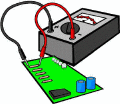
So, the more voltage, the greater electrical equivalent of the "water pressure"; and the more current (amperage), the greater the flow, comparable to gallons a minute. Thus, as we should expect, the overall rate of energy flow is simply the product of those two things. We measure electrical power with a unit called the Watt (after James Watt); or, where we are using a lot of it, we often use the kilowatt, which is 1,000 watts. One watt is a current of one amp flowing under a "pressure" of one volt. Notice carefully that wattage is therefore itself a flow rate: wattage does not measure energy, wattage measures the rate at which energy is being delivered or used. To know how much energy has been delivered or used, we have to multiply by time—just as we convert water's flow rate of "gallons a minute" to a quantity, gallons, by multiplying the rate by time (a flow of 5 gallons a minute operating for 3 minutes delivers 3 x 5, or 15 gallons of water total).
The usual scientific measure of energy is the "Joule" (after James Prescott Joule), which is the energy delivered by one watt of power flowing for one second. But, since cooking appliances use powers in the kilowatt range and typically run for many minutes, or even hours, at a time, the joule is much too small a unit for everyday use outside science labs (you've probably never even heard of it, any more than you have of the coulomb). The more usual measure of household energy is the "kilowatt-hour", which is exactly what the name implies: the energy conveyed by a flow of one kilowatt running for one hour.
(A kilowatt-hour is 3,600,000 joules: 1 watt-second times 1,000—to get from watts to kilowatts—times 3600, the number of seconds in an hour; you can see why the joule is not a practical unit for household energy measurements.)
If we do a little super-simple algebra, we find that:
The current flow in amps is the power divided by the voltage.
That is the relation we have been driving toward, and which controls what we need in the way of in-wall wiring to operate our induction-cooking unit (or any other major electrical appliance).
Water does not flow in pipes without needing to overcome resistance (else the tiniest pressure would suffice to send any quantity of water we desired across any expanse whatever); it is restricted by the thickness of the pipe, the internal roughness of the pipe, bends in the pipe, and numerous other factors. Likewise, electricity does not flow unimpeded in wires. For one thing, not every material carries an electrical current with equal ease: some substances, notably metals, carry it with little opposition, whereas with others, such as plastic or glass, an electrical current encounters great opposition. (The technical term for the resistance an electrical current encounters is, duh, resistance, measured in Ohms after Georg Simon Ohm, and it derives from atomic-physics matters far beyond our concern here.) But even in excellent conductors—gold, silver, copper—electricity encounters some resistance, and the energy it loses in overcoming that resistance is given off as heat. A simple example is the ordinary household toaster: it uses an internal structure of special wires (low enough resistance to get a large current flow, but high enough to give up a lot of the current's energy as heat) to make your morning toast. An ordinary "coil" electrical stove operates the same way: an electrical current through a resistive run of a special wire generates heat.
Even though the electricity-carrying wires in your home's walls are made of an excellent conductor, copper, they are not of infinite diameter, and so offer some resistance to the electrical flow they carry. Thus it is that the size of wire (the diameter of the copper) is rigidly set by building codes to match the maximum amount of current that size of wire is allowed—by law!—to carry. That specification is intended, with a generous safety factor, to assure that no in-wall wire ever gets hot enough to be a fire risk. Not only is the wire sized for a certain maximum current (or, looking at it the other way, the maximum current is set by the size of installed wire), but the law also requires that there be a device that will instantly "break" (open, or switch off) the circuit should that allowed maximum ever be exceeded. In olden times, that device was a "fuse" (and probably still is in some older homes): a one-use device consisting of a small metal strip (enclosed in glass) designed to melt and thus break open at the maximum current it is rated for (such as a "15-amp fuse"). Nowadays, we use instead the aptly named "circuit breaker", which can be used indefinitely—one can just reset it if it trips open.

No matter how loud and long the authorities try to preach common sense, there are always dolts who don't get the message, and do things like substitute a larger-capacity fuse in a circuit that regularly blows the correct fuse; such people tend to turn up dead in house fires, so evolution does work. Also, some older homes were wired with aluminum wires, to save money over copper wire; that was legal at the time (though it no longer is), and such homes are serious dangers, with their wiring needing replacement. Aluminum wire is not defective per se, in the sense that it can carry the current it was rated for; but aluminum expands and contracts with heat much more than the usual copper, so—as it turns out in hindsight—aluminum wires tend to loosen connections at screw terminals from repeated expansion/contraction, which creates high-resistance connections that can over-heat or cause sparking (or both) and thus start fires.
The point of this is that the power supply to your kitchen cooking unit does not have an infinite capacity—far from it. You thus need to restrict yourself to an induction-cooking unit (or any electrical cooking unit) that does not demand more than your wiring can supply. Or, if you are in the design stages, you need to install wiring adequate to the unit you want.
Superficially, the calculation seems simple. Typical voltages for dedicated appliance circuits are approximately 240 volts, and the unit tells you its power requirement, so—in theory—a simple arithmetic division gives you the required "ampacity" (current-carrying capacity) for your in-wall wiring. So, if you have your eye on a unit with four elements each of 2.8 kW power, you reckon that's 4 x 2.8 x 1000 = 11,200 watts, so dividing by 240 volts gives just under 47 amperes as the answer; that suggests a 50-amp circuit capacity.
(In the U.S., supply-circuit capacities in amps typically start at 15 amps then tend to run in multiples of ten: 20, 30, 40, 50, etc.
There are three problems with that simple calculation:
Let's look at those issues individually.
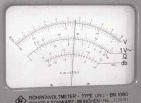
Maintaining the voltage level of the electricity supply to every customer a power company has is a tremendously difficult task (think about the famous "brownouts" and "blackouts"). Thus, even by established standards, mains supply voltages have a fairly generous leeway before they're considered out of bounds. A nominal 115-volt supply, for example, is better described as one that might vary from 105 to 125 volts; a nominally 230-volt supply might possibly vary from 214 to 246 volts. Moreover, the "nominal" value can vary somewhat from region to region: some places specify 115 volts, where others require 120 volts; likewise, some specify 230 volts, others 240 volts, yet others 220 volts. (The specifying is done by whatever governmental body regulates—or operates—power companies.) Tolerated variations from the nominal can range from ± 7% to ± 10%.
None of that means that power companies' supply voltages do normally or frequently swing to the limits of their tolerance—most keep the mains voltages not far from their nominal value most of the time. But swings can happen, and we don't want to be in a marginal condition where our cooking-unit breaker regularly trips.
It is hard to make flat statements with certainty in this area, but it seems—from looking at owner manuals—that fortunately for us most or all modern units are now designed so that lower supply voltages simply lower the maximum power output of the unit. They do not, that is, try to "make up" for lower supply voltages by drawing more current. We are thus usually sufficiently safe to proceed by just reckoning the current draw for the specified unit total maximum power (about which see the paragraphs below) and a nominal supply voltage of 240 volts.

This is probably the most important part of this page. To reckon needed ampacity—as well as to understand what you're spending your money on—you need to clearly understand what a unit's true maximum power output (and thus power input from the supply wiring) really is. That is more difficult than it might seem, owing to some useful features that most modern units have; it wouldn't be so bad if the appliance makers were more open about it, but whether by design or sheer ineptitude, most are very confusing when it comes to describing their units' power outputs and needs.
In the simplest of cases, a unit would have some number of elements, each capable of some particular maximum power output. To take a purely hypothetical simple case, assume a unit with four identical elements, each of which can produce a maximum of 1.8 kW (kilowatts). The total power output of the unit would then be 4 x 1.8 = 7.2 kW, and it would require an ampacity of 7200/240 = 30 amperes (that's the watts divided by the volts). Easy-peasy.
The same simple figuring applies regardless of the powers of the individual elements: a two-element "domino" unit with a 1.8-kW element and a 2.4-kW element would max out at 1.8 + 2.4 = 4.2 kW, and thus need 4200/240 = 17.5 amps capability from its supply wiring.
But some makers long ago realized that few cooks ever need all their cooktop elements going at once; and even when they do, they are rarely using all of them at or near the individual elements' maxima. They thus devised a rather clever way to help cooks make better use of the total power available to and suppliable by the unit: what is called power sharing. It is just what its name suggests: a clever, electronically controlled way to apportion available power among the elements actually in use at any given moment so as to give each the most possible. There are, as we will see, two forms of "power sharing": a fairly sophisticated one, and a much commoner "brute force" one called "boost".
Let's clarify the more sophisticated form of power sharing with a simple example. Suppose we have a two-element unit designed to be used on a 20-amp supply line. The maximum total power the unit can put out is thus just 20 x 240 = 4800, or 4.8 kW. Without power sharing, the two individual elements' powers cannot add to over that 4.8 kW; they might be 2.4 kW each, or 1.8 kW and 3.0 kW, or 1.2 kW and 3.6 kW, or any other combination totalling 4.8 kW. But here's what power sharing can do: the individual elements might—to make up an example—have maximum powers of 2.8 kW each. But that totals 5.6 kW, more than 4.8 kW: how can this be? It can be because you can run each element at up to (in this example) 2.4 kW—which is 85% of its maximum—without exceeding that true total unit maximum of 4.8 kW. Then suppose you open up one element—say, to boil some water—to its individual maximum of 2.8 kW. Now the unit is still limited by the true maximum of 4.8 kW, so with one element drawing 2.8 kW, there is only 2.0 kW left. And that's all that the second element can produce when the first is "wide open". The power sharing allows you to "steal" a little of the second element's capabilities to augment that of the first (or, of course, vice versa). The end result is a unit that is much more flexible in day-to-day use than would be one where the individual elements have lower apportioned maxima. You never, ever can get more than that 4.8 kW the design gives, but you can apportion that 4.8 kW much more freely.
The mechanics of how sharing is allocated can vary from maker to maker—does element A always over-ride element B? Or do they share in proportion? You need to read the owner's manual to find out.
That is one kind of "power sharing". It was developed by a company now part of the Fagor appliance group, and is found in units powered by Fagor-made hardware. That includes many brands; with induction (as with most "white goods", that is, major appliances), regardless of the brand label on the thing, the guts are made by one of only a few companies. (See our page here on induction-equipment makers for more information on this matter.) There is, just to complicate the picture, another kind of power sharing, and in fact it is by far the more common form.
That other kind is called "boost". In principle, it is very similar to the power sharing just described, but is less flexible. Instead of software-controlled proportioned sharing, a "boost" involves simply jumping up one element by a set "boost" level at the expense of its share-mate element. Boost usually pushes the "boosted" element quite a ways above the power level it is designed to run at "steady-state" (that is, for extended periods of time), and typically shuts itself off after 10 minutes; though it can then be reactivated, chances are that attempting to run an element boosted for more than a couple of boost cycles will bring on an over-temperature shutdown. "Boost" is chiefly intended for getting a pot of water or some other liquid to a boil quickly. The theory is that effectively over-running the element need only take place for a limited time, so the "boost" can be high. "Boost" is either on or off: you cannot use graduated degrees of sharing on units with the "boost" feature. (Some think of it as an inferior copy of "true" power sharing, but that's subjective opinion.)
Power sharing, of either sort, almost always takes place between pairs of elements. That is, on a four-element cooktop, each pair of elements will have sharing within that pair—it is not worked among all four in combination, because that would be far too complex. For historical design reasons, induction cooktops are frequently powered "under the hood" by so-called "generators" of 3.6 kW or 3.7 kW capability; a four-element unit will have two such generators, each serving one pair of elements, while a five-element unit will have three generators, two each serving a pair and the last dedicated to a single large element, which is thus of 3.6 kW or 3.7 kW in power and which does not share power with any other element. As you can see in our table listings, almost all four-element induction cooktops are of 7.2 kW or 7.4 kW capacity, while many of the five-element units are of 10.8 kW capability.
The reason we need to be sure we understand power-sharing and boost is that it is all too easy to be misled about a given unit's true maximum power by the descriptions the makers tend to give on their web sites and in their promotional literature. Too often, they do not distinguish between a unit's elements' true, steady-state power capabilities and their individual, with-sharing (or with-boost) power levels. Often, when we try to determine a unit's total power output (and thus also its power-input requirements), we can get numers substantially higher than correct. In some instances, different statements of power by the maker in different places (say, on their web page for the unit, in their specifications for the unit, and in the installation instaructions for the unit) give significantly differing numbers.
Some companies make it fairly clear in their specifications that such power sharing takes place, and that the power capability of the unit as a whole is less than the sum of its individual elements' powers. Others do not. And some—deliberately, we suspect—conceal the reality deep in the numbers where it is hard (if not impossible) to find. That is a critical shopping point, and we raise it again elsewhere, when we talk about choosing a unit. We here try very hard to extract from multiple sources what, exactly, each unit's true maximum unit power really is, and we show our best estimate in the "info box" we supply for each unit. Sometimes we are quite confident; sometimes we are fairly sure; and sometimes, despite diligence, we are making a best guess. (And making direct contact with makers is often little more helpful, even when one gets beyond ordinary "customer service" personnel to supposedly knowledgeable sales executives—only the engineers can really answer the important questions accurately, and it's hard to get to them.)
This is all somewhat comedic in the light of the fact that many makers—and retailers—disdain even giving any individual element powers for their units, which is sort of like asking someone to buy a car based solely on its color and count of wheels.
Remember: you need power answers about induction cookers for two distinct reasons: first, to know how much actual total cooking power you're buying for your dollars (which is why our listings always show a dollars-per-kilowatt figure for every unit), and second, to calculate if you are able to supply the unit with as much power as it might demand at maximum use, the topic we turn to next.
As has been remarked about putting a man on the Moon, given enough money, one can do almost anything. If you want 100-amp service to your cooking station, you can get it if you're willing to pay for it. But when you get above household norms, that can get pretty pricey, indeed (especially considering what the cost of copper, of which electrical wiring is made, has done in recent years—thieves now commonly steal rolls of cable for lucrative black-market resale).
Older homes typically (in the U.S.A., anyway) had 150-amp main house panels—meaning that the entire house could take no more than 150 amps from the power company (some were even just 100-amp service). Newer homes are usually built with 200-amp service, though that is far from universal, especially in lower-cost and non-custom homes. But, as you see, the 50-amp service we projected in our hypothetical example above comes out to 1/3 to 1/4 of the entire supply for the house! That's not as horrid as it sounds, because only a few appliances gobble serious power when running—things like lights and televisions and computers eat power, too, but not like a cooktop or an oven or an electric clothes dryer—but it's still quite a lot.
The building codes usually specify a minimum of 20-amp 240-volt service for dedicated appliance circuits (wall sockets, at 120 volts, are typically 15 amps per circuit); but, as we see, 20 amps is not an awful lot for an electrical cooktop. There are stock breakers up to 60 amps, but, of course, the breaker must match the actual ampacity of the wire used in the circuit. The problem is that the higher the wanted ampacity, the thicker the needed wire, and thus the harder it is to run and work with (and the more expensive). For those who care, here is an informal summary of maximum ampacity versus wire gauge ("AWG"):

(It is informal because the applicable building codes determine it for your locale—but those are near-standard values.)
You want the highest ampacity you can reasonably afford (remember, you're doing this once for, one hopes, years if not a lifetime). Check with your contractor or electrician on the exact differences in cost between the various ampacities, and don't forget to ask about the impact of higher loads on the house wiring as a whole! Note that circuit-breaker ratings over 15 amps run in multiples of 10, so a wire ampacity of, say, 33 amps means a maximum 30-amp breaker size.
We recommend that if you are wiring anew or doing a re-wire anyway,
you install 8-gauge wire for your cooktop; but check with your electrician.
You may recall that farther above we remarked that a household-type countertop unit just couldn't be very powerful; now you see why. In North America, most sockets are nominal 120-volt wiring, and usually with a current limit of 15 amps; even if we assume that nothing else whatever is plugged into any other socket on the same circuit, we have a maximum of 15 amps. Those figures give us 1,800 watts as the absolute maximum available to power a plug-in unit—so you can see why few are rated over 1.4 or so kW.
You might be thinking that you can simplify this matter considerably by just looking up in an equipment-maker's specifications, or if necessary asking about, the ampacity needed for a given unit. Well, Yes and No. We have found that many makers—and especially makers of residential equipment—do not specify required ampacities; at most, they specify a nominal unit power (some don't even give that). Moreover, even the specified power level is often stated without reference to exact supply voltage. Commercial units are usually specified in more detail; often, they specify maximum current draws at each of two voltages, one high and one low. Residential-equipment makers are, almost to a one, very sloppy about setting forth exact specifications for anything. So the burden typically falls on you, the end user, to determine the needed ampacity.
Why not, if the published specs are unclear, just ask? You can, and you should. But you have to take the answers with at least a grain of salt. Whomever you are actually speaking with, a retailer or a customer-service representative, may know little if anything more than you do, and may just give you a glib but not necessarily accurate reply. Or the maker itself may choose to be ultra-conservative. One well-known maker, for example, has a unit specified at 7,200 watts unit maximum power. If the supply voltage is 240 volts, that makes a nice, simple, round 30-amp draw at maximum power (all elements "on" at maximum, supply voltage at nominal max); but the maker specifies a 40-amp circuit for the unit. Another well-known brand specifies 7,400 watts maximum (implying 30.83 amps needed), but more than one user has reported running it "wide open" (all units set to max) for at least an hour on a 30-amp circuit.
There are at least two factors at work in cases like those just described. One is the reality that a nominally "30-amp" circuit breaker typically has a little "slop" in it, and will—by design—tolerate a little more than its nominal maximum current (both codes and actual practice include numerous large safety margins, so nominal values can be exceeded by a little here and there). Second, unit makers will normally be conservative about their specs. A unit that truly draws 7,200 watts when run wide open might, in a laboratory setting, draw a little more for a brief moment if all the elements are switched from "off" to fully "on" simultaneously (the phenomenon is known as "surge current", an initial high influx of energy); the maker might thus, to cover himself, specify a 40-amp circuit, even though no one outside a laboratory equipped with special equipment could ever replicate the circumstances (what, stand four members of your family, each with one control in hand, and shout "Go" ?).
This is not an argument that you should ignore makers' ampacity requirements when they are specified. It is an argument that when the arithmetic suggests to you that a given unit you're interested in looks from the power numbers as if it ought to work with whatever ampacity you have available, yet the maker specifies a higher value, you should inquire closely before giving up. For your convenience, here are the total-unit power levels that correspond with the nominal upper limits for various common circuit ampacities, based on a nominally 240-volt supply voltage:
Keep in mind that nowadays most units seem to just take in (and thus put out) less power with lowered voltages. But unless it is so stated in the unit specifications, there's no way to know that that's how a particular unit works: power may indeed go down in proportion to voltage—or, if the design is to keep the power level constant, it may instead go up. To clarify: a maker may say his unit takes 7,200 watts at 240 volts. Now if the unit works one way, reducing the voltage by 10% (to 216 volts) might simply drop the unit's "wide-open" power output to 6,480 watts, a corresponding 10% drop. But if the unit is designed another way, so as to keep its power steady, then at 216 volts it might draw over 33 amps so as to maintain that 7,200-watt output. To repeat yet again, it is our belief that most, possibly all, residential-type units work in the first way, what we might call the "common-sense" way: less voltage, less power. But we know for a fact that at least some commercial units work the other way, so assume nothing—read the manuals, ask, or do your own arithmetic.

You need, before making any firm decisions about either a particular induction-cooking unit or about kitchen wiring (if you're in a position to be deciding about that), to find out for sure a few things. As we keep saying, wherever possible get the data from the horse's mouth, and in writing. No data here are so arcane or confidential that any source should be reluctant to give you a written response about them.
Let's review them in summary:
First, if you are in the design or construction stages of a new house or major remodel, get a definite, written contractor quotation on the differences in cost between 30-amp, 40-amp, 50-amp, and 60-amp dedicated service for your cooktop (your oven, if electric, is an entirely separate matter). Also ask if your main house entry service can supply dedicated circuits of the higher levels without making problems for the supply to the rest of the house. Keep in mind that you should be planning ahead: even if you eventually opt—silly you—for a gas cooktop, you might change your mind in a few years, or you might want to sell the house to someone who wants some form of electrical cooktop. Do it once, do it right. (Reminder: we recommend 8-gauge wiring, good for 50 amps, as a minimum.)
Then, knowing the voltage you have to deal with (nominally 240 volts) and the ampacity you'll have available, calculate the minimum power you'll be able to supply to your induction-cooking unit. Again, that's just—
P = V x I
—where V is the nominal mains voltage (presumably 240 volts) and I is the amperage (the letter I is the normal symbol for electrical current, from "intensity"). For example, if you only have 30-amp service, you'd have 30 x 240 = 7200 watts (or 7.2 kW) available. (Few if any newer new homes will have 30-amp range/stove circuits, but many older ones may.)
At this point, if your result is a just a little less than the unit you're interested in seems to need (say you have 7.2 and it seems to want 7.4), you have to make a judgement call: will you or won't you go ahead anyway. (If the power you have available is well below what's needed, sorry, forget it; you only need dither when it's fairly close.) On the one hand, the worst that can happen is that if you use the unit at or near its absolute maximum (all elements "on" at full power simultaneously) you could trip the circuit breaker; on the other hand, you don't want to be tripping the breaker very often (once or twice a year is, we suppose, tolerable). Think about it; ask other people about it; then decide.
Last, but—as they say—not least, make absolutely, positively sure that you have, preferably in writing, a definite statement from the maker or retailer as to the total maximum power that any unit you are interested in can draw with each element set to its maximum. Then be sure that is within the limit you have calculated.
(All in all, it's lots faster and easier to actually do than to explain.)
What next? Choose a page from the lists (the colored blocks) atop this and every page.
Advertisement:
Advertisement:
All content copyright © 2002 - 2025 by The Owlcroft Company.
This web page is strictly compliant with the W3C (World Wide Web Consortium) Extensible HyperText Markup Language (XHTML) Protocol v1.0 (Transitional) and the W3C Cascading Style Sheets (CSS) Protocol v3 — because we care about interoperability. Click on the logos below to test us!
This page was last modified on Monday, 22 January 2024, at 12:46 am Pacific Time.